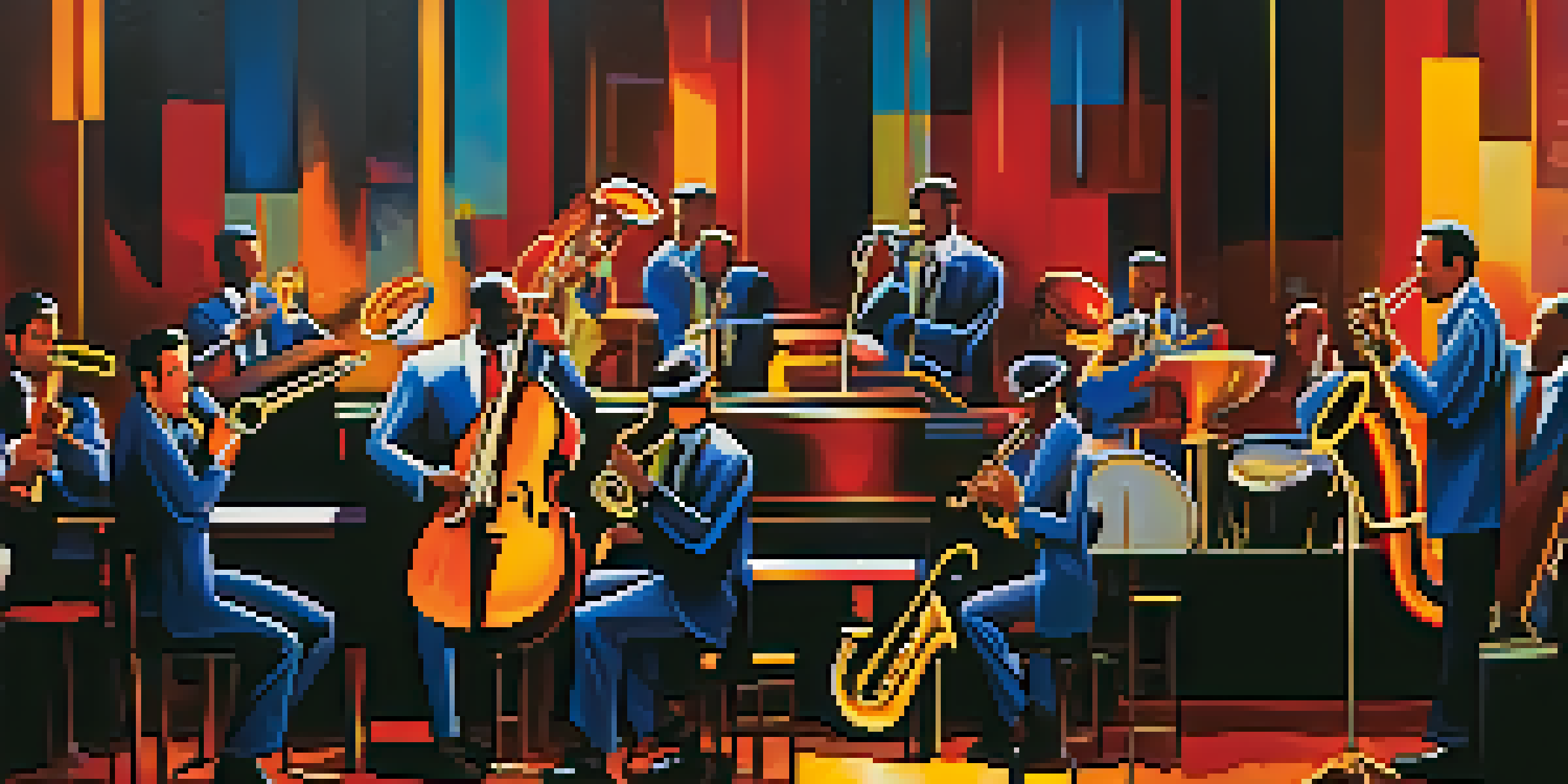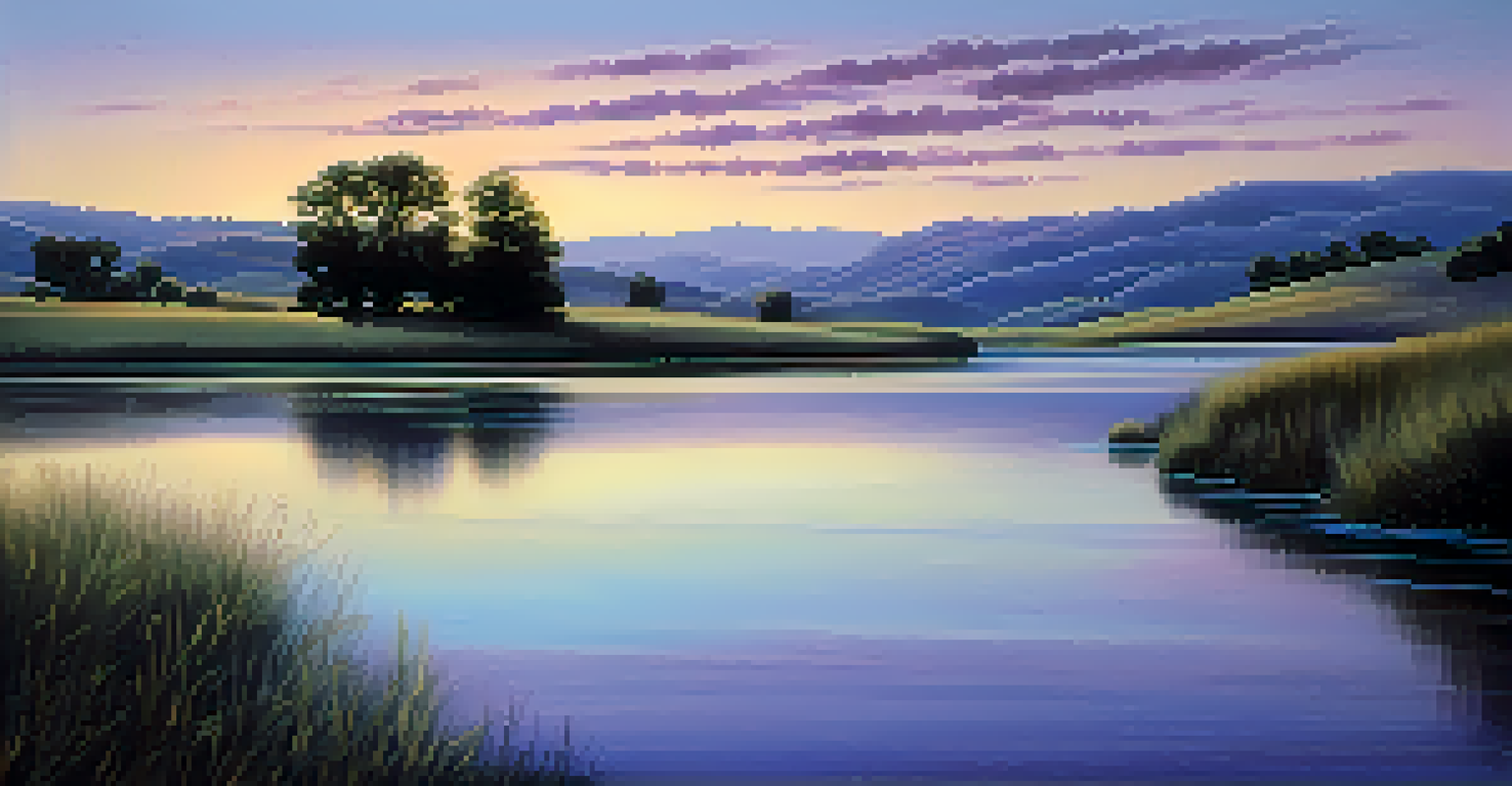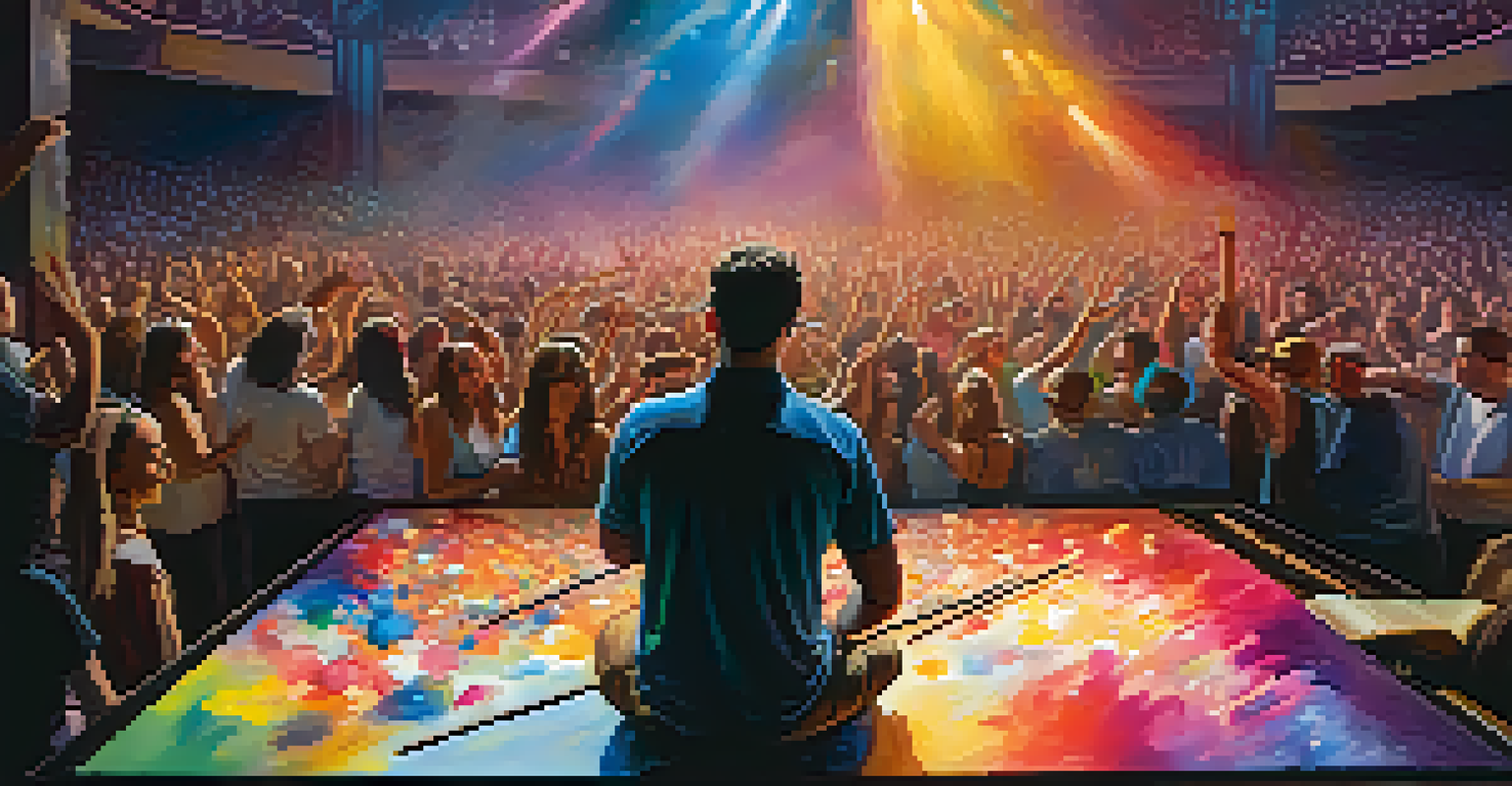Painting and Music: A Symphony of Colors and Sounds

The Harmonious Relationship Between Art Forms
Painting and music have long been intertwined, each influencing the other in profound ways. Just as a painter uses brushstrokes to create visual rhythms, a musician employs notes to produce auditory textures. This synergy allows both art forms to express emotions that transcend words, inviting audiences to experience feelings in a visceral way.
Every artist dips his brush in his own soul, and paints his own nature into his pictures.
For instance, think about how a vibrant piece of abstract art can evoke the same rush of emotions as a powerful symphony. Both can transport us to different realms, where colors and sounds dance together, igniting our imagination. In this sense, artists in both fields act as conduits, channeling feelings and stories through their respective mediums.
Moreover, the process of creating art, whether it be a painting or a musical composition, often shares similarities. Both require an understanding of balance, contrast, and harmony, allowing artists to develop a unique language that resonates with their audience. As a result, the collaboration between painting and music can lead to innovative artistic expressions.
Color and Sound: A Sensory Exploration
Colors and sounds are intrinsically linked in terms of how they affect us emotionally. Just as certain colors can evoke feelings of calm or excitement, specific musical notes can elicit similar emotional responses. For example, a deep blue might remind someone of a soothing melody, while a fiery red could resonate with a fast-paced, energetic tune.

This connection is often explored in synesthesia, a condition where individuals can 'see' sounds or 'hear' colors. Such experiences highlight the profound ways our senses can overlap, allowing artists to draw inspiration from one another. Imagine a painter creating a piece inspired by the sounds of a lively jazz band, using bold strokes and bright colors to capture the energy of the music.
Art Forms Enhance Emotional Expression
Both painting and music serve as powerful vehicles for conveying emotions that resonate deeply with audiences.
By embracing this sensory exploration, artists can create works that engage multiple senses, offering a richer experience for their audience. This fusion of color and sound invites viewers and listeners to engage not just intellectually but emotionally, creating a lasting impact.
The Role of Emotion in Artistic Expression
Both painting and music serve as powerful vehicles for emotional expression. Artists often draw from their own experiences, using their craft to convey feelings that may be difficult to articulate. A painter might express joy through vibrant hues and dynamic forms, while a musician may capture sorrow through haunting melodies.
Music can change the world because it can change people.
Take, for example, the famous painter Vincent van Gogh, whose swirling colors in 'Starry Night' evoke a sense of wonder and melancholy. Similarly, the music of composers like Beethoven can stir deep emotions, often reflecting the struggles and triumphs of the human experience. This deep emotional resonance is what makes both art forms so compelling.
Furthermore, the act of creating art can also be therapeutic, allowing artists to process their emotions and experiences. Whether through the rhythm of brushstrokes or the cadence of musical notes, the creative process can serve as a powerful outlet for self-expression and healing.
Art Movements Influenced by Music
Throughout history, various art movements have drawn inspiration from music, creating a dialogue between the two forms. For instance, the Impressionist movement emerged in the late 19th century, capturing fleeting moments much like musical improvisation. Artists like Claude Monet used light and color to evoke the feeling of a scene, paralleling how musicians convey emotion through melody.
Similarly, Abstract Expressionism in the mid-20th century often reflected the spontaneity found in jazz music. Artists like Jackson Pollock embraced the chaos and freedom of improvisation, creating works that felt alive and dynamic. This connection illustrates how artists can borrow techniques and ideas from one another to enrich their own work.
Sensory Connection Between Color and Sound
Colors and sounds are intrinsically linked, with each capable of evoking similar emotional responses.
As we explore these movements, we can see how the interplay between painting and music has led to groundbreaking innovations in both fields. This ongoing dialogue continues to inspire contemporary artists, reminding us that creativity knows no boundaries.
Visual Art in Musical Performance
The relationship between painting and music isn't just theoretical; it manifests physically in performances as well. Many musicians incorporate visual art into their shows, using backdrops, projections, or even live painting to enhance the audience's experience. This fusion creates an immersive environment that captivates the senses.
For example, a concert might feature a live painter who creates a piece inspired by the music being performed, allowing the audience to witness the artwork evolve in real-time. This dynamic interplay not only enriches the performance but also deepens the emotional connection between the audience and the art being created.
By blending visual art with musical performance, artists can create multi-dimensional experiences that resonate on various levels. This collaboration invites attendees to engage with both forms of art, encouraging them to perceive the music and visuals in a new light.
The Impact of Music on Visual Artists
Music often serves as a source of inspiration for visual artists, influencing their creative process and the themes they explore. Many artists listen to specific genres or playlists while working, as the rhythms and melodies can help set the mood and guide their brushstrokes. For instance, some painters might find classical music enhances their focus, while others may prefer upbeat pop tunes to energize their work.
Furthermore, certain themes in music can translate into visual narratives. A song about love might inspire a series of romantic paintings, while a piece about nature could lead to breathtaking landscapes. This ability to draw inspiration from music allows artists to create works that resonate with diverse audiences, bridging the gap between different forms of expression.
Collaboration Sparks Artistic Innovation
The interplay between painting and music fosters innovative expressions and enriches both art forms.
Ultimately, the influence of music on visual art showcases the interconnectedness of creative pursuits. By recognizing and embracing these connections, artists can continue to innovate and push the boundaries of their work.
Conclusion: A Lasting Legacy of Collaboration
The relationship between painting and music is a testament to the power of collaboration in the arts. Both forms share a language of emotion, color, and sound, allowing them to communicate in ways that transcend verbal expression. As artists continue to explore this interplay, we can anticipate exciting new developments that challenge our perceptions of both mediums.
From synesthetic experiences to multi-sensory performances, the fusion of painting and music invites us to engage with art on a deeper level. This collaborative spirit not only enriches the individual art forms but also enhances our overall cultural landscape, encouraging creativity across disciplines.

As we celebrate the symphony of colors and sounds, let us embrace the ways in which painting and music inspire one another. Together, they create a vibrant tapestry of human expression that resonates with us all.